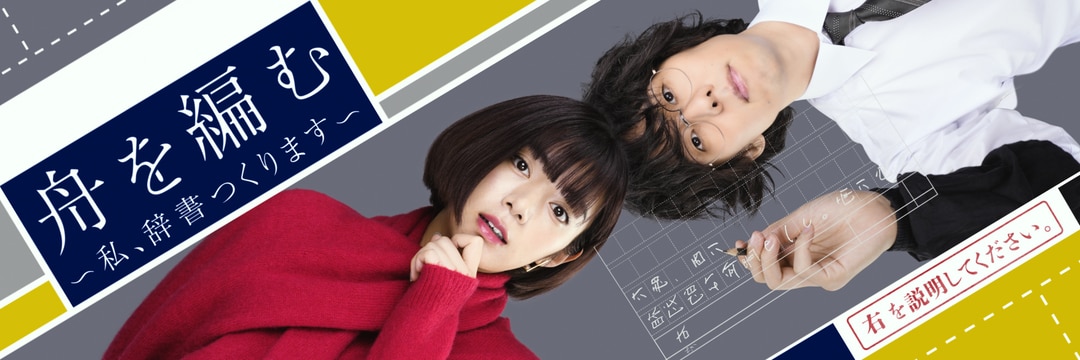Thursday, April 25, 2024
Two down, hurray!
Posted by
Teck
at
4/25/2024 05:22:00 PM
0
comments
![]()
Labels: Calligraphy
Tuesday, April 23, 2024
Comparing calligraphy seal pastes (part 2)
Posted by
Teck
at
4/23/2024 12:33:00 PM
0
comments
![]()
Labels: Calligraphy
Monday, April 22, 2024
舟を編む (Fune wo Amu) NHK TV series (2024)
Posted by
Teck
at
4/22/2024 02:25:00 PM
0
comments
![]()
Labels: TV
A bit about the loss of two JMSDF SH-60K helicopters during night ASW training
Posted by
Teck
at
4/22/2024 10:59:00 AM
0
comments
![]()
Labels: Miscellaneous, Thoughts
Friday, April 12, 2024
Comparing calligraphy seal pastes (part 1)
贡品 (rank 3 out of 7 quality ranks from Zhangzhou Babao)
一级贡品 (rank 2)
特级贡品 (best quality from Zhangzhou Babao, aka rank 1)
From 上海西泠印泥:
古色 (a brownish colour mimicking seal paste from older times)
美丽 (a darker red)
青花光明硃砂 (the usual vermilion colour of cinnabar)
箭镞 (more yellowish tint)
镜面朱砂 (a higher quality of vermilion colour with a slightly brighter tint)
From 苏州姜思序堂:
硃磦 (made using cinnabar "fat")
From 石泉印泥:
精制美丽 (a darker red)
From 双维印尼:
堆朱 (common seal paste for everyday use)
朱磦 (vermilion with yellow tint)
黄磦 (yellowish seal paste; the colour is man-made using sulphur and mercury)
仿古 (a brownish colour mimicking seal paste from older times)
And 正红印泥 (maybe from 一得阁; this has a bright vermilion colour).
Posted by
Teck
at
4/12/2024 03:04:00 PM
0
comments
![]()
Labels: Calligraphy
Wednesday, April 10, 2024
One down, one more to go
Posted by
Teck
at
4/10/2024 03:48:00 PM
0
comments
![]()
Labels: Calligraphy
Tuesday, April 09, 2024
欲語涙先流 calligraphy piece
Posted by
Teck
at
4/09/2024 10:04:00 PM
0
comments
![]()
Labels: Calligraphy
Monday, April 08, 2024
譬如朝露 calligraphy piece
The deadline for one of the exhibitions is next week, and I have already written a few candidates. The final step is to select the one that I will actually submit. Wish me luck!
Posted by
Teck
at
4/08/2024 10:10:00 PM
0
comments
![]()
Labels: Calligraphy
對酒當歌 piece
Posted by
Teck
at
4/08/2024 09:54:00 AM
0
comments
![]()
Labels: Calligraphy
Saturday, April 06, 2024
Full bloom
Posted by
Teck
at
4/06/2024 05:10:00 PM
0
comments
![]()
Labels: Miscellaneous
Thursday, April 04, 2024
Legend of the Red Dragon aka LORD (BBS door game)
Posted by
Teck
at
4/04/2024 04:56:00 PM
0
comments
![]()
Labels: Computer games, Old games, Old times
Thursday, March 21, 2024
Sambar deer hair (山馬毫) calligraphy brushes
The middle three brushes were given to me by a relative. The unused one, second from the right, has a brush portion that is 45mm long with a diameter of 7mm.
Posted by
Teck
at
3/21/2024 04:49:00 PM
0
comments
![]()
Labels: Calligraphy
Wednesday, March 20, 2024
Dune Part Two at Dolby Cinema
Posted by
Teck
at
3/20/2024 12:02:00 AM
0
comments
![]()
Labels: Movies
Monday, March 18, 2024
Yamada Naoko's new movie Kimi no Iro announced
Posted by
Teck
at
3/18/2024 06:31:00 PM
0
comments
![]()
Labels: Movies
Saturday, March 16, 2024
Random haiku
Posted by
Teck
at
3/16/2024 03:14:00 PM
0
comments
![]()
Labels: Works
Thursday, March 14, 2024
Dune Part Two at IMAX
Posted by
Teck
at
3/14/2024 03:13:00 PM
0
comments
![]()
Labels: Movies
Tuesday, March 12, 2024
It is again the season when this flower blooms また、この花が咲く季節になったんだな
Posted by
Teck
at
3/12/2024 11:55:00 AM
0
comments
![]()
Labels: Violet Evergarden
Wednesday, March 06, 2024
"Unless you win" vs "Unless I win"
"Unless you win."
Toranaga looked intently at him. Then laughed uproariously. He said something to Hiro-matsu through his laughter and Hiro-matsu nodded.
"Yes, Mister Foreigner with the impossible name, yes. You named the one mitigating factor."
Posted by
Teck
at
3/06/2024 12:14:00 AM
0
comments
![]()
Friday, March 01, 2024
Ordering calligraphy seal paste from Taobao
- Ordered at night on 19 February 2024
- Shipped from store on 20 February 2024
- Reached consolidation centre on 21 February 2024
- Loaded onto truck departing from consolidation centre on 22 February 2024
- Left China on 27 February 2024
- Arrived in Japan on 27 February 2024
- Cleared customs on 29 February 2024
- Delivered on 1 March 2024
Posted by
Teck
at
3/01/2024 02:19:00 PM
0
comments
![]()
Labels: Calligraphy
Suzume (すずめの戸締まり) to air on Japanese TV
/#すずめの戸締まり
— 映画『すずめの戸締まり』公式 (@suzume_tojimari) February 29, 2024
🚪地上波 初放送決定🎊
\
📺日本テレビ『金曜ロードショー』
4/5(金)21:00~23:24(30分拡大)
※本編ノーカット
エンディング部分は、新海監督が本作の企画書に描き込んだイラストを使った特別映像を初公開します!お楽しみに👀✨✨@kinro_ntvhttps://t.co/Y77ed9CURt
Posted by
Teck
at
3/01/2024 09:44:00 AM
0
comments
![]()
Labels: Movies
Thursday, February 29, 2024
Leap year!
Posted by
Teck
at
2/29/2024 11:16:00 PM
0
comments
![]()
Labels: Miscellaneous
Saturday, February 24, 2024
Preview screening of Laid-Back Camp Season 3 (Episodes 1 to 3)
Posted by
Teck
at
2/24/2024 07:23:00 PM
0
comments
![]()
Labels: TV
Yuanxiao 元宵
Posted by
Teck
at
2/24/2024 09:04:00 AM
0
comments
![]()
Labels: Calligraphy
Monday, February 19, 2024
DIY calligraphy brush rest
And woke up with muscle ache the next day. 😅
Posted by
Teck
at
2/19/2024 05:29:00 PM
0
comments
![]()
Labels: Works
蒼空の炎
作曲:神前 暁
見つめられ 思い知る
自分の愚かさよ
炎に変われ
強きその心 守り抜こう
君が歩く道を照らそう
胸に抱きしめたこの熱は
誰も奪えない
Posted by
Teck
at
2/19/2024 01:20:00 PM
0
comments
![]()
Labels: Songs
Friday, February 16, 2024
Writing in the same style as someone else 臨書
Posted by
Teck
at
2/16/2024 07:30:00 PM
0
comments
![]()
Labels: Calligraphy
Thursday, February 15, 2024
Early blooming violet
Posted by
Teck
at
2/15/2024 05:20:00 PM
0
comments
![]()
Labels: Miscellaneous
Wednesday, February 14, 2024
Watching I Wish I Could Meet You Again on the Hill Where That Flower Blooms あの花が咲く丘で、君とまた出会えたら。
Posted by
Teck
at
2/14/2024 08:01:00 PM
0
comments
![]()
Labels: Movies

















































